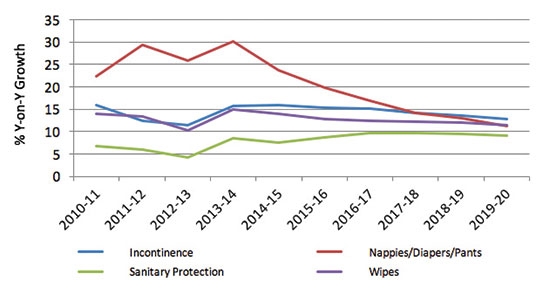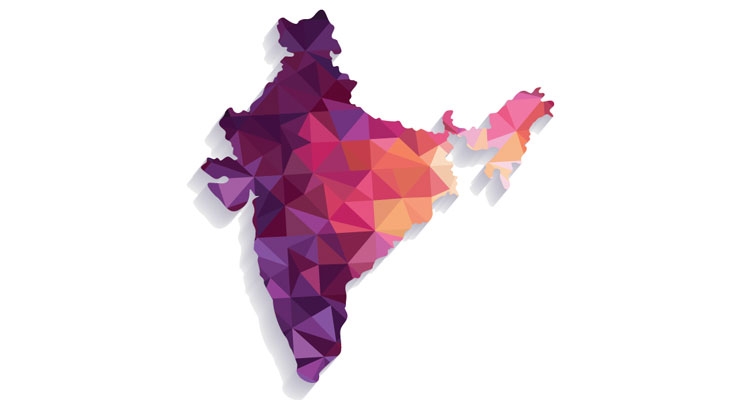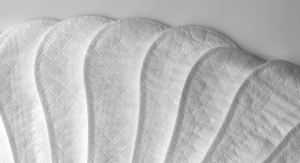Svetlana Uduslivaia, Euromonitor International11.11.16
India remains one of Asia’s fastest-growing economies. Real GDP is expected to increase by 7.3% in 2016, driven mainly by strong gains in private consumption. Unemployment in the country stood at 5.1% in 2015 and is expected to decrease to 4.8% in 2016. India’s current population is nearly 1.3 billion, and the country is expected to overtake China as the world’s most populous country in less than 20 years. Furthermore, India’s youthful age structure promises continued gains for some time. While India’s fertility rate is dropping, it is still relatively high at 2.5 births per female. Adding to favorable population trends, per capita disposable incomes have been on the rise. During the 2015-2030 period, total disposable income will increase by a cumulative value of 158% in real terms, growing at an average annual rate of 6.5%.
However, income inequality in India is also on the rise, with 46% of India’s population living below the poverty line (US$3.10 a day), compared to 18% in China, for example. Moreover, average disposable incomes of middle class households in India are about half those in China. Additionally, adult literacy rates and female literacy rates, while on the rise, still fall behind a number of other developing markets in the Asia-Pacific region. The female employment rate in India—at 28.8% in 2015—also remained far below those in other Asian markets, including markets like China (67.7%), Vietnam (74.7%), Indonesia (53.7%) and Thailand (67.3%).
India’s economic progress and favorable demographic trends have created a solid platform for disposable hygiene product demand. However, continued high levels of poverty, the current status of women, who still face high levels of unemployment and low incomes as well as low literacy rates and cultural taboos, continue to pose challenges for the industry and require further investment in consumer education, product development, distribution and marketing to ensure a steady rise in per capita consumption and industry revenues.
Focus on Education and Consumer Awareness
Overall, retail sales of disposable hygiene products in India grew 15% in real terms (US$ 2015 fixed exchange rate) to reach $814 million. The industry is expected to see further positive growth across product categories in the coming years to reach an estimated $1.5 billion by 2020. The country’s unmet potential, however, is estimated at well above $22 billion, which will provide ample opportunities for long-term industry growth as India’s consumer base continues to evolve.
Consumer education and product awareness remain at the heart of industry strategies in India. Sanitary protection and diapers continue to benefit from awareness campaigns run by the leading companies, such as Procter & Gamble and Johnson & Johnson, as well as NGOs and local government bodies. These campaigns focus on hygiene care for women and infants, especially in smaller towns and rural areas, where social taboos remain strong, while cotton pads and cloths for baby care and menstrual care remain the principal tools of hygiene management, especially among low-income consumers.
In 2015, Procter & Gamble won the Glass Grand Prix in the gender equality category at the Cannes Lions International Festival of Creativity for its “Touch the Pickle” campaign in India featuring the company’s sanitary protection brand Whisper. The successful campaign, which went viral and led to increased dialogue in the country, addresses the issue of stereotypes and taboos women in India face during the menstrual period, including the myth that a jar of pickles that would rot if a menstruating woman touches it. The film, created by the Mumbai office of BBDO India, encourages women to break the taboos and touch the pickle jar. In other moves, in 2015 SCA Group announced a global partnership with the UN’s WSSCC (Water Supply and Sanitation Collaborative Council) to raise awareness about women’s health and hygiene, in particular to break the taboo around menstruation for women and girls.
Diapers and Sanitary Protection Continue to Dominate, Albeit with Low Per Capita Consumption
Within total retail disposable hygiene in India, diapers and sanitary protection account for a combined 92% value share of sales and continue to see strong growth. Relatively high birth rates as well as an increase in female labor participation in urban areas further helped support demand.
Table: India, retail sales by category, % year-on-year growth, US$ value, constant, 2015 fixed exchange rate:
 However, on the whole, per capita consumption of diapers remained low, at 21 units for the population aged zero to three years old in 2015, as compared to 229 units in Asia Pacific as a whole, 963 units in Western Europe and 1244 units in North America. Consumption remains low due to a significant rural population, which accounts for approximately 65% of the total population in India, and low incomes that limit use of disposable items.
However, on the whole, per capita consumption of diapers remained low, at 21 units for the population aged zero to three years old in 2015, as compared to 229 units in Asia Pacific as a whole, 963 units in Western Europe and 1244 units in North America. Consumption remains low due to a significant rural population, which accounts for approximately 65% of the total population in India, and low incomes that limit use of disposable items.
The low per capita consumption represents a significant opportunity for the industry, while income disparities and significant variations in lifestyle create demand for a wide variety of products at different price points. In addition to international brands, which often retail at a premium level and are appreciated by middle-to-upper-income and affluent consumers, the marketplace is also seeing an expansion of domestic economy brands and lower-priced Chinese imports. While more affluent consumers prefer international brands due to better quality, local brands and imported products from China provide an alternative for low-income families, enabling them to enter the category.
To further expand the category, some of the international brands have been successfully promoting a pant-type diaper that offers more convenience, such as Japan-based Unicharm, for example, which continues to see strong gains in the country.
The per capita consumption of sanitary protection in India stood at 11 units per female aged 12-to-54 years in 2015, which is significantly lower than the average of 136 for the Asia Pacific region and 249 in developed markets like the U.S. Low levels of awareness and limited product access in rural areas are among the key factors behind the low level of consumption. Furthermore, affordability remains an issue, and most women in rural areas still use cloths and rags for menstrual hygiene due to the high prices of sanitary pads. Prevailing social taboos also discourage the purchase and use of sanitary protection.
To encourage wider use of products, small manufacturers and NGOs have been focusing on the development and distribution of more affordable sanitary protection products for women in rural areas, also indicating the health benefits of using modern hygiene products as opposed to traditional methods of managing periods. For example, the National Jute Board launched jute-based sanitary napkins in October 2015 with claims of reducing the likelihood of developing cervical cancer.
Jayaashree Industries—a pioneer in the manufacturing of low-cost sanitary towels – has been expanding across India’s states. In fact, Jayaashree Industries reports that, to date, it has installed over 1300 machines producing sanitary protection towels across 27 states in India and seven other countries. A single machine’s minimum capacity is 1600 towels per day. This represents close to 760 million towels annually in total production at only minimum capacity. Last but not least, the majority of sanitary protection manufacturers fund the national government-backed organization Goonj, which collects and recycles used sanitary pads for the poor in rural areas.
The issue of affordability also stands behind the high proportion of standard towels versus more premium ultra-thin towels in India. In 2015, standard towels accounted for 63% of value sales of total towels in retail, growing 5% in constant/real terms over 2014. Ultra-thin towels, however, have been gaining traction in India, as they provide a higher-quality option for women with more disposable income. Ultra-thin towels grew 13% in real value in 2015, over 2014. Other developments in value-added products include the expansion of towels for overnight protection, which have become more pronounced on the store shelves in urban areas.
Adult incontinence products remain a small category in India, due to low product awareness and limited retail availability. The products can be found only in select retail outlets and mainly in large urban areas. Incontinence products in India are prescribed by doctors for the sick and elderly. It is also important to note that wearing a pad and doing household work or worship is still considered unclean and a social taboo in many parts of the country, thereby limiting the consumer base.
Compared to diapers and sanitary protection, marketing and promotional activity to support adult incontinence in retail is more limited, typically in the form of in-store and point-of-sale advertising in pharmacies. Leading manufacturer Nobel Hygiene also provided marketing support for its Friends brand by placing banners and displays on escalators and at points of sale at More Megastore grocery outlets in 2015.
Despite the challenges, retail sales of adult incontinence were gaining traction in 2015, recording value sales growth of 16% in real terms over 2014. The category is expected see further healthy growth over 2015-2020, recording a 14% CAGR in value terms. Improving product access and rising product awareness can help to support the category expansion, while expected growth in the size of the population in the age group of 65 and over will provide a growing consumer base for adult incontinence. In fact, by 2020 India will have an estimated more than 85 million people in the age group of 65+. Add to this women after childbirth suffering from light incontinence and considering that incidences of incontinence can start as early as the 40s, and the country certainly has a significant potential consumer base for the category.
Opportunities for Incontinence Products in the Institutional Environment
In addition to opportunities in retail, adult incontinence products are likely to benefit further from the expanding healthcare and elderly care facilities. India is expected to see an increase of more than 7% CAGR in the number of hospitals and a 4% CAGR increase in the number of residential care facilities for the elderly in the 2015-2020 period. The expanding number of facilities will cater to the increasing number of people turning to hospital and residential homes for treatment and care, supporting the demand for adult incontinence management in the post-operative environment and for elderly residents. Subsequently, from 2015-2020 adult incontinence sales to the away-from-home channel are expected to increase at a 10% CAGR in real value terms. Moreover, products supplied through healthcare facilities and healthcare providers contribute to the rising awareness and understanding of their use, thereby helping to promote the use outside of institutional care and driving retail demand.
All in all, India offers significant potential for further industry growth, supported by population dynamics and positive macro-trends. However, the high levels of poverty, prevailing social taboos and the need to further improve the status and position of women will call for a diverse set of strategies to grow product consumption – from continuing emphasis on education, collaboration with NGOs and local governments, to the development of a wide range of products to enable product use beyond the middle-upper-income households in urban areas.
However, income inequality in India is also on the rise, with 46% of India’s population living below the poverty line (US$3.10 a day), compared to 18% in China, for example. Moreover, average disposable incomes of middle class households in India are about half those in China. Additionally, adult literacy rates and female literacy rates, while on the rise, still fall behind a number of other developing markets in the Asia-Pacific region. The female employment rate in India—at 28.8% in 2015—also remained far below those in other Asian markets, including markets like China (67.7%), Vietnam (74.7%), Indonesia (53.7%) and Thailand (67.3%).
India’s economic progress and favorable demographic trends have created a solid platform for disposable hygiene product demand. However, continued high levels of poverty, the current status of women, who still face high levels of unemployment and low incomes as well as low literacy rates and cultural taboos, continue to pose challenges for the industry and require further investment in consumer education, product development, distribution and marketing to ensure a steady rise in per capita consumption and industry revenues.
Focus on Education and Consumer Awareness
Overall, retail sales of disposable hygiene products in India grew 15% in real terms (US$ 2015 fixed exchange rate) to reach $814 million. The industry is expected to see further positive growth across product categories in the coming years to reach an estimated $1.5 billion by 2020. The country’s unmet potential, however, is estimated at well above $22 billion, which will provide ample opportunities for long-term industry growth as India’s consumer base continues to evolve.
Consumer education and product awareness remain at the heart of industry strategies in India. Sanitary protection and diapers continue to benefit from awareness campaigns run by the leading companies, such as Procter & Gamble and Johnson & Johnson, as well as NGOs and local government bodies. These campaigns focus on hygiene care for women and infants, especially in smaller towns and rural areas, where social taboos remain strong, while cotton pads and cloths for baby care and menstrual care remain the principal tools of hygiene management, especially among low-income consumers.
In 2015, Procter & Gamble won the Glass Grand Prix in the gender equality category at the Cannes Lions International Festival of Creativity for its “Touch the Pickle” campaign in India featuring the company’s sanitary protection brand Whisper. The successful campaign, which went viral and led to increased dialogue in the country, addresses the issue of stereotypes and taboos women in India face during the menstrual period, including the myth that a jar of pickles that would rot if a menstruating woman touches it. The film, created by the Mumbai office of BBDO India, encourages women to break the taboos and touch the pickle jar. In other moves, in 2015 SCA Group announced a global partnership with the UN’s WSSCC (Water Supply and Sanitation Collaborative Council) to raise awareness about women’s health and hygiene, in particular to break the taboo around menstruation for women and girls.
Diapers and Sanitary Protection Continue to Dominate, Albeit with Low Per Capita Consumption
Within total retail disposable hygiene in India, diapers and sanitary protection account for a combined 92% value share of sales and continue to see strong growth. Relatively high birth rates as well as an increase in female labor participation in urban areas further helped support demand.
Table: India, retail sales by category, % year-on-year growth, US$ value, constant, 2015 fixed exchange rate:

The low per capita consumption represents a significant opportunity for the industry, while income disparities and significant variations in lifestyle create demand for a wide variety of products at different price points. In addition to international brands, which often retail at a premium level and are appreciated by middle-to-upper-income and affluent consumers, the marketplace is also seeing an expansion of domestic economy brands and lower-priced Chinese imports. While more affluent consumers prefer international brands due to better quality, local brands and imported products from China provide an alternative for low-income families, enabling them to enter the category.
To further expand the category, some of the international brands have been successfully promoting a pant-type diaper that offers more convenience, such as Japan-based Unicharm, for example, which continues to see strong gains in the country.
The per capita consumption of sanitary protection in India stood at 11 units per female aged 12-to-54 years in 2015, which is significantly lower than the average of 136 for the Asia Pacific region and 249 in developed markets like the U.S. Low levels of awareness and limited product access in rural areas are among the key factors behind the low level of consumption. Furthermore, affordability remains an issue, and most women in rural areas still use cloths and rags for menstrual hygiene due to the high prices of sanitary pads. Prevailing social taboos also discourage the purchase and use of sanitary protection.
To encourage wider use of products, small manufacturers and NGOs have been focusing on the development and distribution of more affordable sanitary protection products for women in rural areas, also indicating the health benefits of using modern hygiene products as opposed to traditional methods of managing periods. For example, the National Jute Board launched jute-based sanitary napkins in October 2015 with claims of reducing the likelihood of developing cervical cancer.
Jayaashree Industries—a pioneer in the manufacturing of low-cost sanitary towels – has been expanding across India’s states. In fact, Jayaashree Industries reports that, to date, it has installed over 1300 machines producing sanitary protection towels across 27 states in India and seven other countries. A single machine’s minimum capacity is 1600 towels per day. This represents close to 760 million towels annually in total production at only minimum capacity. Last but not least, the majority of sanitary protection manufacturers fund the national government-backed organization Goonj, which collects and recycles used sanitary pads for the poor in rural areas.
The issue of affordability also stands behind the high proportion of standard towels versus more premium ultra-thin towels in India. In 2015, standard towels accounted for 63% of value sales of total towels in retail, growing 5% in constant/real terms over 2014. Ultra-thin towels, however, have been gaining traction in India, as they provide a higher-quality option for women with more disposable income. Ultra-thin towels grew 13% in real value in 2015, over 2014. Other developments in value-added products include the expansion of towels for overnight protection, which have become more pronounced on the store shelves in urban areas.
Adult incontinence products remain a small category in India, due to low product awareness and limited retail availability. The products can be found only in select retail outlets and mainly in large urban areas. Incontinence products in India are prescribed by doctors for the sick and elderly. It is also important to note that wearing a pad and doing household work or worship is still considered unclean and a social taboo in many parts of the country, thereby limiting the consumer base.
Compared to diapers and sanitary protection, marketing and promotional activity to support adult incontinence in retail is more limited, typically in the form of in-store and point-of-sale advertising in pharmacies. Leading manufacturer Nobel Hygiene also provided marketing support for its Friends brand by placing banners and displays on escalators and at points of sale at More Megastore grocery outlets in 2015.
Despite the challenges, retail sales of adult incontinence were gaining traction in 2015, recording value sales growth of 16% in real terms over 2014. The category is expected see further healthy growth over 2015-2020, recording a 14% CAGR in value terms. Improving product access and rising product awareness can help to support the category expansion, while expected growth in the size of the population in the age group of 65 and over will provide a growing consumer base for adult incontinence. In fact, by 2020 India will have an estimated more than 85 million people in the age group of 65+. Add to this women after childbirth suffering from light incontinence and considering that incidences of incontinence can start as early as the 40s, and the country certainly has a significant potential consumer base for the category.
Opportunities for Incontinence Products in the Institutional Environment
In addition to opportunities in retail, adult incontinence products are likely to benefit further from the expanding healthcare and elderly care facilities. India is expected to see an increase of more than 7% CAGR in the number of hospitals and a 4% CAGR increase in the number of residential care facilities for the elderly in the 2015-2020 period. The expanding number of facilities will cater to the increasing number of people turning to hospital and residential homes for treatment and care, supporting the demand for adult incontinence management in the post-operative environment and for elderly residents. Subsequently, from 2015-2020 adult incontinence sales to the away-from-home channel are expected to increase at a 10% CAGR in real value terms. Moreover, products supplied through healthcare facilities and healthcare providers contribute to the rising awareness and understanding of their use, thereby helping to promote the use outside of institutional care and driving retail demand.
All in all, India offers significant potential for further industry growth, supported by population dynamics and positive macro-trends. However, the high levels of poverty, prevailing social taboos and the need to further improve the status and position of women will call for a diverse set of strategies to grow product consumption – from continuing emphasis on education, collaboration with NGOs and local governments, to the development of a wide range of products to enable product use beyond the middle-upper-income households in urban areas.















